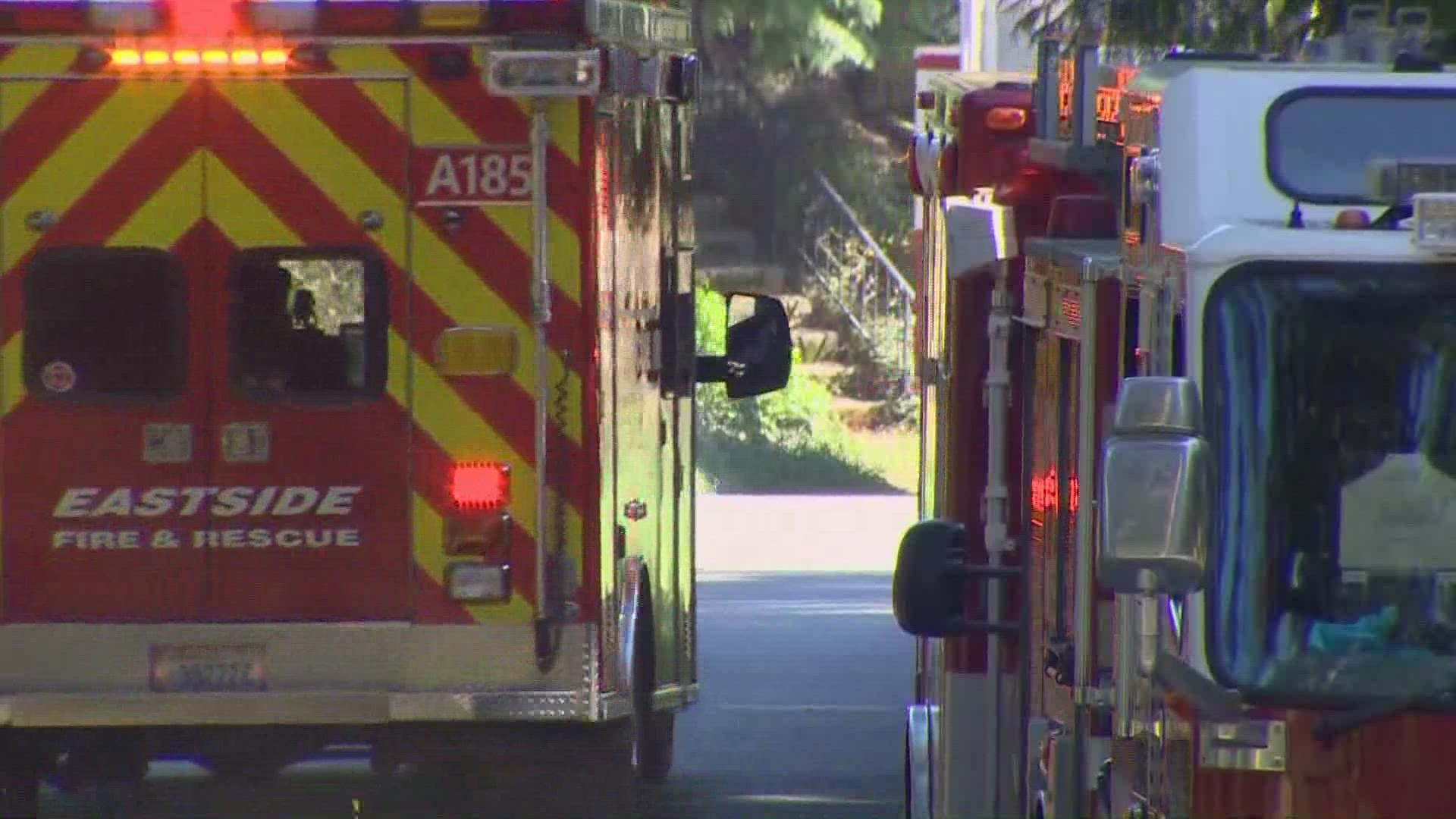MIRRORMONT, Wash. — King County Executive Dow Constantine announced a new Wildfire Risk Reduction Strategy Tuesday, recommending actions to prevent wildfires, prepare responses for when they do occur and engage in forest recovery techniques when they are complete.
The County began working on the strategy while completing its 2020 Strategic Climate Action Plan, and several leaders noted the connection between climate change and wildfire threats in the wildland-urban interface, or the area where the wilderness and developed land meet.
"As King County encounters hotter, drier summers as the result of climate change, there is a greater potential for devastating fires in communities like this one," King County Executive Dow Constantine said.
The Washington Department of Natural Resources' most recent maps significantly expand the wildland-urban interface in King County - putting about 15% of King County's population in a wildland-urban interface area, meaning those places are at greater risk when wildfires do occur.
King County says firefighters responded to more than 700 brushfires in the summer of 2021. Eastside Fire and Rescue says nearly all of its firefighters are now wildland-certified, and their personal protective equipment now includes wildfire-specific tools.
Strengthening emergency response is also a cornerstone of the plan, along with enhancing community evacuation protocols and making sure they keep up with population growth.
"That growth, coupled with the impacts of climate change, the hotter drier days, that's placing the need for wildfire preparedness and prevention at the doorstops of many of our community partners," Eastside Fire and Rescue Assistant Chief Ben Lane said.
An additional and major component of the plan is working toward forest resilience, aiming to empower a diversity of tree species in different development stages.
King County says while large-scale forest thinning and prescribed burns are common tactics throughout much of the Western United States, their experts believe those actions are not the most effective or feasible in western Washington forests.
Applying those tactics here would fundamentally alter the dense, complex structure of westside forests and adversely affect ecological functions. Vegetation recovers quickly in the central Puget Sound region, so any risk reduction would be short-lived.
King County's strategy recommends targeted fuel reduction around critical infrastructure and homes where it can reduce the potential for damage, particularly from smaller fires. Removing and controlling the spread of invasive plant species – some of which are particularly flammable – can further reduce wildfire risks, particularly in areas that are at high risk for ignition such as roadways.
You can learn more about the new plan here.

